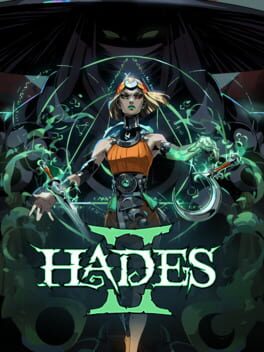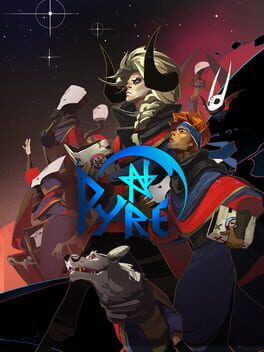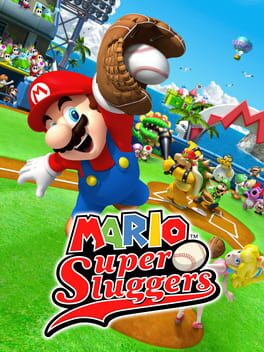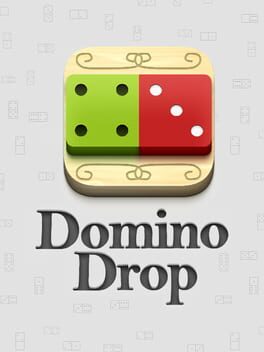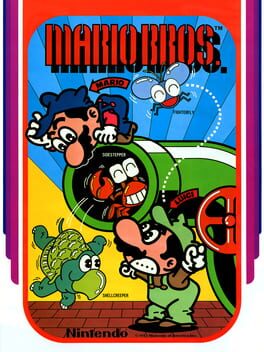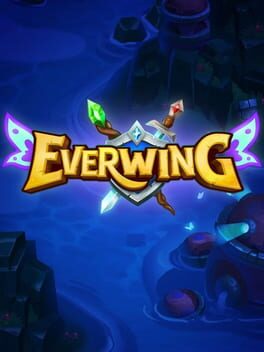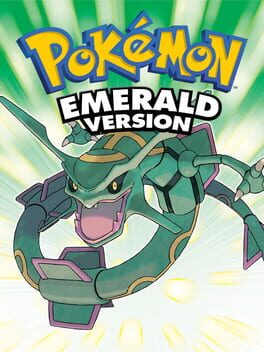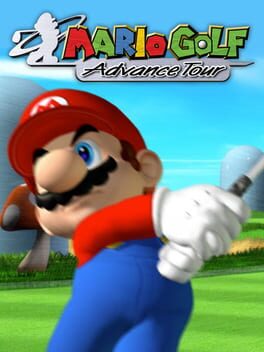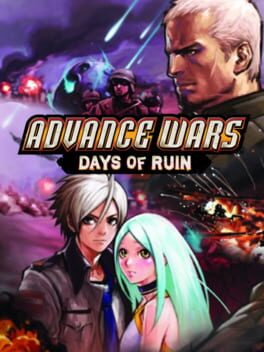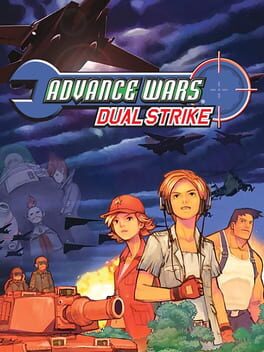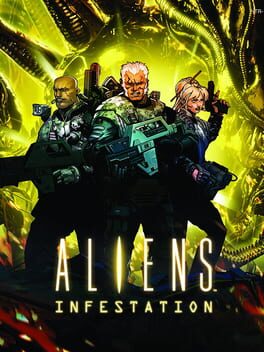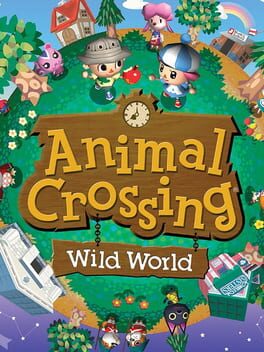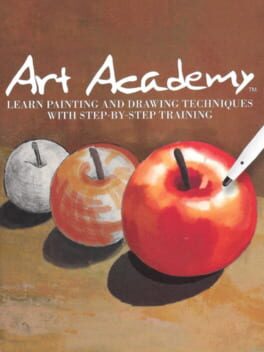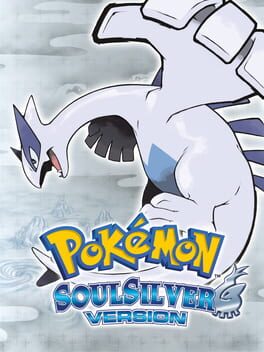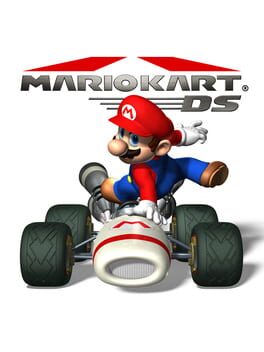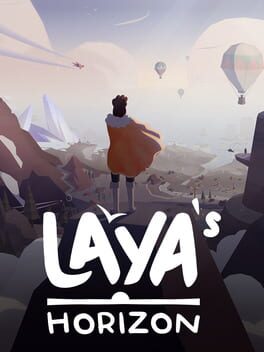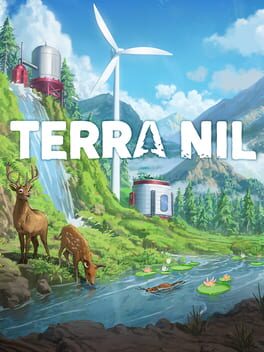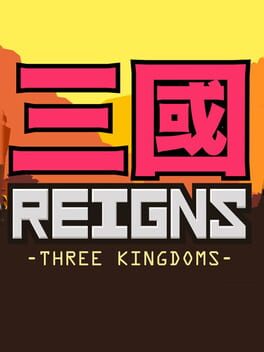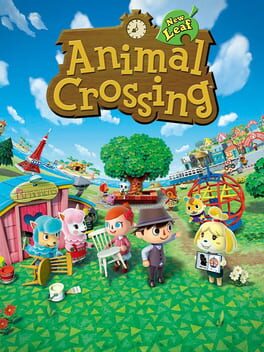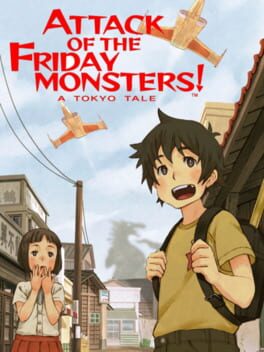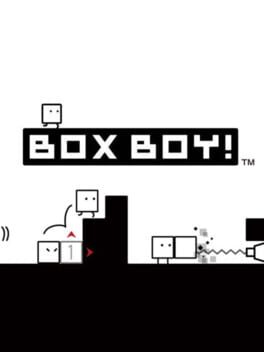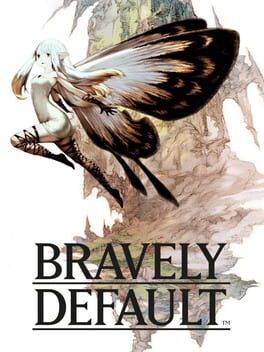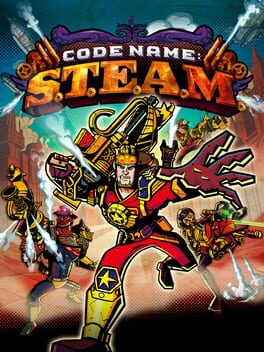Jesp
32 reviews liked by Jesp
Hades II
2024
Pyre
2017
Supergiant Games I feel is one f those studio that never misses.
Every single one of its titles has been a project that, even if small, feels like a giant love letter, with effort put beyond comprehension in any single aspect.
Pyre is ofter considered their weaker work, mostly because of it's premise: you gotta help a bunch of lost travelers, and they way you help them is.... by playing a basketball ritual?
It's a weird idea, that many people may found too funky... but the way it is presented and the role it plays into the story makes me adore this title.
The fac that you as the "director" of the group get to decide where to go in the realm, and every decisoon may inpact the way the different characters grow and play, also leads to every "match" to be important, as a single loss and mistake can lead to huge consequences.
Even with the ability of "retry" to reach the best possible endings the game offers... you still have a weight to your choices, and you gotta make some hard decisions that will make you think even after the game is over.
It is a truly unique experience, full of amazing haracters, amazing music and a interesting gameplay loop.
My second favorite Supergiant game, and definitely the best basketball game I have ever played!
Every single one of its titles has been a project that, even if small, feels like a giant love letter, with effort put beyond comprehension in any single aspect.
Pyre is ofter considered their weaker work, mostly because of it's premise: you gotta help a bunch of lost travelers, and they way you help them is.... by playing a basketball ritual?
It's a weird idea, that many people may found too funky... but the way it is presented and the role it plays into the story makes me adore this title.
The fac that you as the "director" of the group get to decide where to go in the realm, and every decisoon may inpact the way the different characters grow and play, also leads to every "match" to be important, as a single loss and mistake can lead to huge consequences.
Even with the ability of "retry" to reach the best possible endings the game offers... you still have a weight to your choices, and you gotta make some hard decisions that will make you think even after the game is over.
It is a truly unique experience, full of amazing haracters, amazing music and a interesting gameplay loop.
My second favorite Supergiant game, and definitely the best basketball game I have ever played!
Pyre
2017
Easily the most ambitious of Supergiant's games, there is a lot to love and respect. Clever "combat" design, a diverse soundtrack, and a large cast of interesting characters lend this story of leadership, responsibility, and hope so much heart.
The one thing holding this back from being a slam-dunk for me is its pacing. I could never get into a flow state with this one like I could with Transistor or Hades. Whether that had to do with its uneven story structure or my unfamiliarity with Oregon Trail style games is something I have to figure out.
In any case, this is still a fantastic outing from Supergiant, and I hope they continue making heartfelt games like these into the future.
The one thing holding this back from being a slam-dunk for me is its pacing. I could never get into a flow state with this one like I could with Transistor or Hades. Whether that had to do with its uneven story structure or my unfamiliarity with Oregon Trail style games is something I have to figure out.
In any case, this is still a fantastic outing from Supergiant, and I hope they continue making heartfelt games like these into the future.
Pyre
2017
Mi reacción honesta: https://youtu.be/yj9_bOrCXmY?si=tH5nr6N30IRnwh77
Mario Super Sluggers
2008
Domino Drop
2015
7:13 AM
I place a domino down — it has a vertical orientation and is yellow on the top and bottom — and it causes a chain reaction that explodes downwards into a visual cacophony of numbers, leaving only a little stack left. I am lying on top of my bed and wearing my winter jacket, scarf, hat, and headphones when I turn around to look at the clock, and it is exactly time for me to leave. In one swift motion I grab my backpack and slip my shoes on as I close the door behind me. The world outside is cold.
7:30 AM
If I’m being honest, my train platform is more like a parking lot. There’s literally nowhere to sit, and no overhang to use as shelter should the rain or snow decide to bless my commute. In the seven minutes between now and when the train will hopefully arrive, I take the opportunity to drop some more dominos.
As the minutes pass I silently acknowledge each passing commuter joining me on the platform, and they all stand in line exactly where they had twenty-four hours prior. I consider how weird it is that we’ve all picked “spots” to inhabit, and that I could tell you each person’s without knowing who they are in real life. I’ve seen their faces every day for four years, but we’ve never interacted in any meaningful way. Never even a “hello,” never even a nod.
But I still recognize almost every single person. I know when they get haircuts and I know when they get new shoes. I wonder if they recognize me too as the train arrives on time. I can’t believe it as I slip my phone back into my jacket pocket.
7:38 AM
My trip, in total, takes just over two hours door to door. That number tends to shock people, and when they ask me how I do it my answer is always the same: I’m barely awake on the way there, and all I wanna do on the way home is decompress. Would I rather live closer to my office? Absolutely. But there are small joys in a long commute. Imagine sitting on your living room couch for one straight hour and just looking out the window. Imagine how weird that would feel. Guess where that’s not even the slightest bit weird, dear reader: That’s right. On a train.
Every day for about two hours I get to sit and space out and watch the world go by. Nobody questions it. In fact, it’s the expectation! Doing anything more than nothing is impressive. Getting any work done, listening to a podcast, reading a book — that’s all extracurricular to the table stakes of just sitting down and spacing out.
This morning, I am dropping dominos and listening to an album I’ve been meaning to check out. As I pause between moves, I watch as the trees and buildings and marshlands whip by. I consider taking a picture of the factory this morning, but I’ve already taken so many over the years. I look at my lock screen to check the name of the song as it wraps up. This is a really solid “train album.”
8:33 AM
Nestled in a corner between four to five other passengers, I am dropping dominos on my second train of the morning. After years and years, I’ve mastered riding this particular train: During the morning rush I know which specific car to board and exactly where to stand. I know at which stops I should move out of the way of other passengers leaving and at which stops I can stay perfectly still and continue to drop dominos without worry. Three stops in I can find a seat without feeling guilty, although I’ll only be sitting until the fourth and final stop arrives all too soon.
8:51 AM
I place a mobile order for a latte while I wait for the train doors to open because I hate money as much as I love caffeine. I switch apps to place one more domino before heading to the subway, or as I like to call it: The Subterranean Way. I am a big time idiot.
8:57 AM
My last train of the morning is a quick one, but just long enough to drop a few more dominos. I’ve been playing the same round since I first woke up this morning, but I’m still nowhere near my own high score. At a certain point, the game becomes more about avoiding fuck ups than anything else, and I’ve hit that point. I am fully immersed.
For the first time ever, I miss my stop and have to walk eight blocks downtown to my office.
3:13 PM
When fall turns to winter I get nosebleeds once or twice a day, usually without warning. In this particular instance I was in the middle of a meeting, and there are now about ten people sitting in a conference room wondering if I’ll come back.
I find that when I play Domino Drop all the way to work, everything else around me fades away entirely. I’ll begin to act purely on impulse instead of scrutinizing every potential move. When I achieve this zen-adjacent flow-state, I play better than ever.
But this is not the case when blood is flowing from my nose. In a game about avoiding fuck-ups, I am fucking up every possible move. After about two solid hours of playing the game on the way to work, it’s in this weird carpeted alcove in the bathroom that it all comes undone. With one hand clenching my nostrils together and the other swiping left and right, I am trying to force myself into that same zen-adjacent state I’d entered gracefully so many hours earlier. This never works. Almost as quickly as my nosebleed began, the game is over. I’ve lost.
The game comes to a screeching halt, and prominently displays my disappointing score. On the top left of the screen, a small number denotes the amount of games I’ve played in total: 1773.
On my commute home, I will start 1774.
I place a domino down — it has a vertical orientation and is yellow on the top and bottom — and it causes a chain reaction that explodes downwards into a visual cacophony of numbers, leaving only a little stack left. I am lying on top of my bed and wearing my winter jacket, scarf, hat, and headphones when I turn around to look at the clock, and it is exactly time for me to leave. In one swift motion I grab my backpack and slip my shoes on as I close the door behind me. The world outside is cold.
7:30 AM
If I’m being honest, my train platform is more like a parking lot. There’s literally nowhere to sit, and no overhang to use as shelter should the rain or snow decide to bless my commute. In the seven minutes between now and when the train will hopefully arrive, I take the opportunity to drop some more dominos.
As the minutes pass I silently acknowledge each passing commuter joining me on the platform, and they all stand in line exactly where they had twenty-four hours prior. I consider how weird it is that we’ve all picked “spots” to inhabit, and that I could tell you each person’s without knowing who they are in real life. I’ve seen their faces every day for four years, but we’ve never interacted in any meaningful way. Never even a “hello,” never even a nod.
But I still recognize almost every single person. I know when they get haircuts and I know when they get new shoes. I wonder if they recognize me too as the train arrives on time. I can’t believe it as I slip my phone back into my jacket pocket.
7:38 AM
My trip, in total, takes just over two hours door to door. That number tends to shock people, and when they ask me how I do it my answer is always the same: I’m barely awake on the way there, and all I wanna do on the way home is decompress. Would I rather live closer to my office? Absolutely. But there are small joys in a long commute. Imagine sitting on your living room couch for one straight hour and just looking out the window. Imagine how weird that would feel. Guess where that’s not even the slightest bit weird, dear reader: That’s right. On a train.
Every day for about two hours I get to sit and space out and watch the world go by. Nobody questions it. In fact, it’s the expectation! Doing anything more than nothing is impressive. Getting any work done, listening to a podcast, reading a book — that’s all extracurricular to the table stakes of just sitting down and spacing out.
This morning, I am dropping dominos and listening to an album I’ve been meaning to check out. As I pause between moves, I watch as the trees and buildings and marshlands whip by. I consider taking a picture of the factory this morning, but I’ve already taken so many over the years. I look at my lock screen to check the name of the song as it wraps up. This is a really solid “train album.”
8:33 AM
Nestled in a corner between four to five other passengers, I am dropping dominos on my second train of the morning. After years and years, I’ve mastered riding this particular train: During the morning rush I know which specific car to board and exactly where to stand. I know at which stops I should move out of the way of other passengers leaving and at which stops I can stay perfectly still and continue to drop dominos without worry. Three stops in I can find a seat without feeling guilty, although I’ll only be sitting until the fourth and final stop arrives all too soon.
8:51 AM
I place a mobile order for a latte while I wait for the train doors to open because I hate money as much as I love caffeine. I switch apps to place one more domino before heading to the subway, or as I like to call it: The Subterranean Way. I am a big time idiot.
8:57 AM
My last train of the morning is a quick one, but just long enough to drop a few more dominos. I’ve been playing the same round since I first woke up this morning, but I’m still nowhere near my own high score. At a certain point, the game becomes more about avoiding fuck ups than anything else, and I’ve hit that point. I am fully immersed.
For the first time ever, I miss my stop and have to walk eight blocks downtown to my office.
3:13 PM
When fall turns to winter I get nosebleeds once or twice a day, usually without warning. In this particular instance I was in the middle of a meeting, and there are now about ten people sitting in a conference room wondering if I’ll come back.
I find that when I play Domino Drop all the way to work, everything else around me fades away entirely. I’ll begin to act purely on impulse instead of scrutinizing every potential move. When I achieve this zen-adjacent flow-state, I play better than ever.
But this is not the case when blood is flowing from my nose. In a game about avoiding fuck-ups, I am fucking up every possible move. After about two solid hours of playing the game on the way to work, it’s in this weird carpeted alcove in the bathroom that it all comes undone. With one hand clenching my nostrils together and the other swiping left and right, I am trying to force myself into that same zen-adjacent state I’d entered gracefully so many hours earlier. This never works. Almost as quickly as my nosebleed began, the game is over. I’ve lost.
The game comes to a screeching halt, and prominently displays my disappointing score. On the top left of the screen, a small number denotes the amount of games I’ve played in total: 1773.
On my commute home, I will start 1774.
Picross 3D: Round 2
2015
major props to hal lab for avoiding cashing in on yearly picross 3d releases like in the 2d series; round 2 is a complete overhaul of the original concept. the original picross 3d struggled with integrating its 3d nature into the actual puzzle solving, as the game's loop involved slicing its three-dimensional voxel sculptures into two-dimensional slices, where row hints pointing towards the player had next-to-no bearing on the solution of any given slice. round 2 instantly solves that by transforming the game's mechanics into an adaptation of color picross from the main series, where instead of chiseling out a monochrome image, you instead have to deal with multiple colors on each line. hints perpendicular to a slice now show the possible colors for that particular block, and thus the loop now involves checking hints on all three axes instead of just the slice's primary two. switching to colors also vastly increases the potential number of hint arrangements. as in the first game, each hint may indicate an unbroken string of blocks, two separate strings of blocks, or three+ strings of blocks, but now each of the two colors can have its own variable number of strings per row. the amount of different idioms that arise from this far surpass the original game.
what makes this particular interesting is that the coloration of the blocks is not random or chosen purely mechanically: it actually reflects the construction of each puzzle. the voxels of the original game are now marked blue, and new, variably shaped, curved blocks are marked orange. this addition adds substantial context to the chiseling process: compared to the rectangular jumble of the original, you can now clearly make out the structure of what you're building over time. while aesthetically pleasing in its own right, this also assists with the mental leg work, as educated guesses can be made much more easily with a rough idea of the puzzle's shape and edges. this creates some pseudo-idioms in its own right as well: for example, edges with a taper at either end generally appear as a single blue string and then two one-block orange strings. the game can get quite inscrutable at times without some real brute forcing of all the different possibilities, so the organic natures of the game's mechanical structures eases some of the tedium and allows for some guesswork.
I played a couple more rounds of the original just to feel it out, and honestly playing this has dampened my enthusiasm for that entry. so many QoL additions here, from the ability to swipe across the screen to break/paint a bunch of blocks in one go to finally being able to isolate the edge-most slice from any direction. the structure here has been changed from tiered assortments of puzzles from easy to hard to thematically driven "books" of puzzles, with the easy/normal/hard selection individualized for each puzzle. goes a long way in making the on-ramp smooth coming out of the original; no need to slog through the piss-easy stuff if you already have some experience with the concept. the ranking system is also much more granular, with your amount of misses (now including incorrect painting, unlike the first title) and time taken now converted to a numeric score, which gets multiplied against the chosen difficulty of the puzzle to get your final score and rank. also a testament to how difficult this game can get: later puzzles can have top "rainbow" ranks allow for 25-30 minutes on a single puzzle with up to three or four misses. the very final puzzle in the game took me over 45 min!
what makes this particular interesting is that the coloration of the blocks is not random or chosen purely mechanically: it actually reflects the construction of each puzzle. the voxels of the original game are now marked blue, and new, variably shaped, curved blocks are marked orange. this addition adds substantial context to the chiseling process: compared to the rectangular jumble of the original, you can now clearly make out the structure of what you're building over time. while aesthetically pleasing in its own right, this also assists with the mental leg work, as educated guesses can be made much more easily with a rough idea of the puzzle's shape and edges. this creates some pseudo-idioms in its own right as well: for example, edges with a taper at either end generally appear as a single blue string and then two one-block orange strings. the game can get quite inscrutable at times without some real brute forcing of all the different possibilities, so the organic natures of the game's mechanical structures eases some of the tedium and allows for some guesswork.
I played a couple more rounds of the original just to feel it out, and honestly playing this has dampened my enthusiasm for that entry. so many QoL additions here, from the ability to swipe across the screen to break/paint a bunch of blocks in one go to finally being able to isolate the edge-most slice from any direction. the structure here has been changed from tiered assortments of puzzles from easy to hard to thematically driven "books" of puzzles, with the easy/normal/hard selection individualized for each puzzle. goes a long way in making the on-ramp smooth coming out of the original; no need to slog through the piss-easy stuff if you already have some experience with the concept. the ranking system is also much more granular, with your amount of misses (now including incorrect painting, unlike the first title) and time taken now converted to a numeric score, which gets multiplied against the chosen difficulty of the puzzle to get your final score and rank. also a testament to how difficult this game can get: later puzzles can have top "rainbow" ranks allow for 25-30 minutes on a single puzzle with up to three or four misses. the very final puzzle in the game took me over 45 min!
Mother
1989
if you're able to handle some 80's rpg clunk, mother is a lovingly made game full of soul and heart. compared to its sequels, the story of Mother is a lot more subdued, and thats one of the things i really like about it. this is my favorite game of all time, and while it isnt for everyone, id still absolutely recommend it. if you want to just see the game and what it has to offer, without the clunk of the NES version, i'd recommend the Mother 1+2 fan translation by Tomato, which includes the Easy Ring, an item that makes grinding almost non-existant.
Mario Bros.
1983
EverWing
2016
5 lists liked by Jesp
by brendonbigley |
25 Games
by brendonbigley |
145 Games
by brendonbigley |
30 Games
by brendonbigley |
15 Games
by brendonbigley |
49 Games
